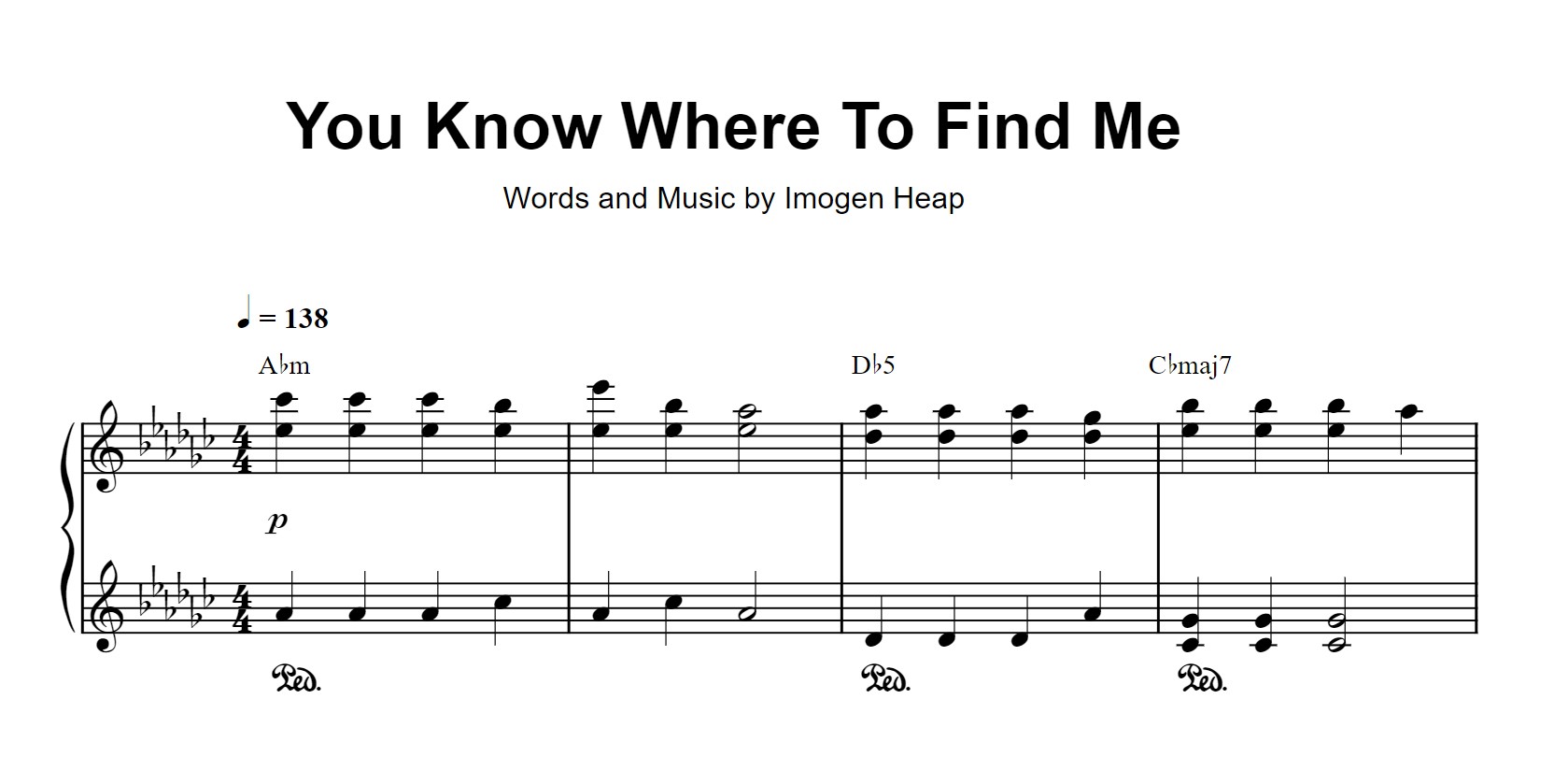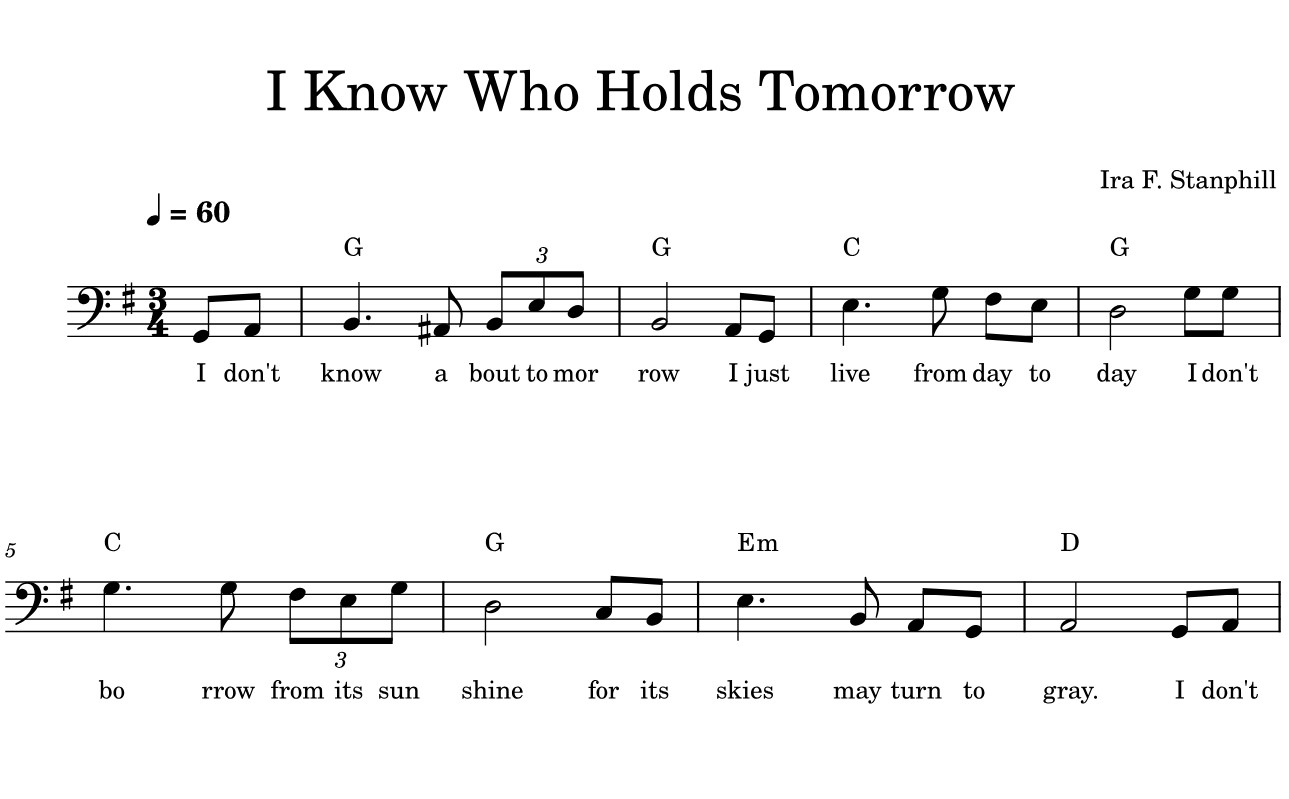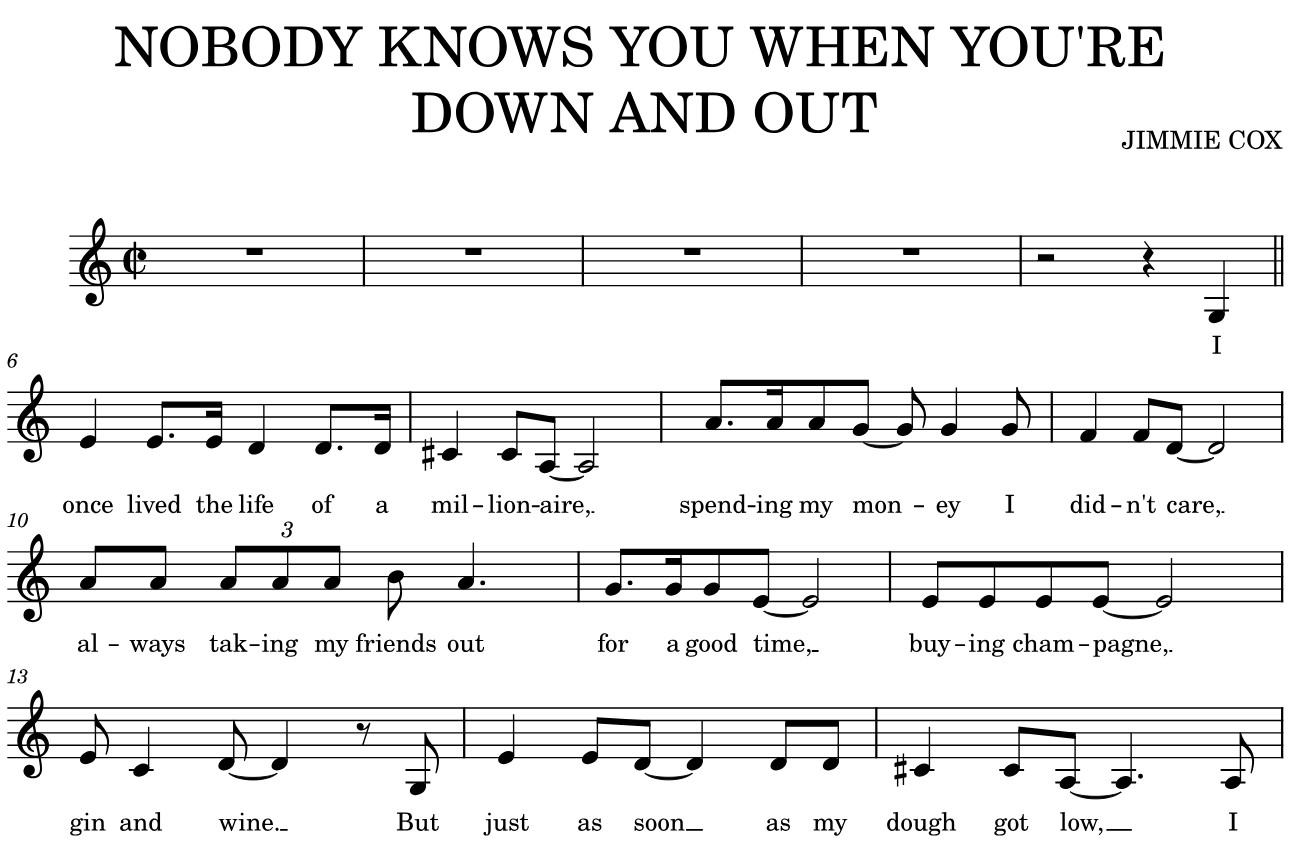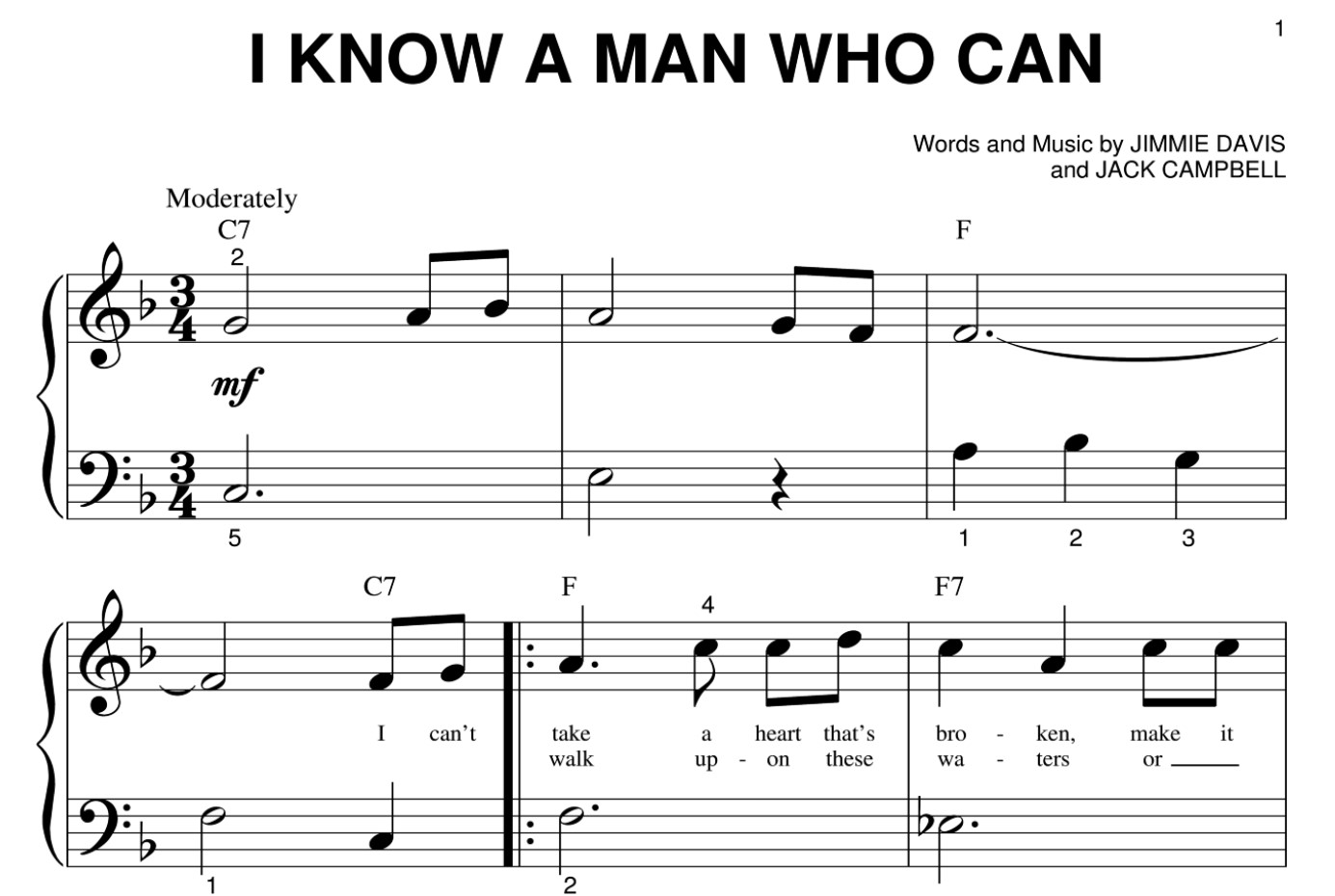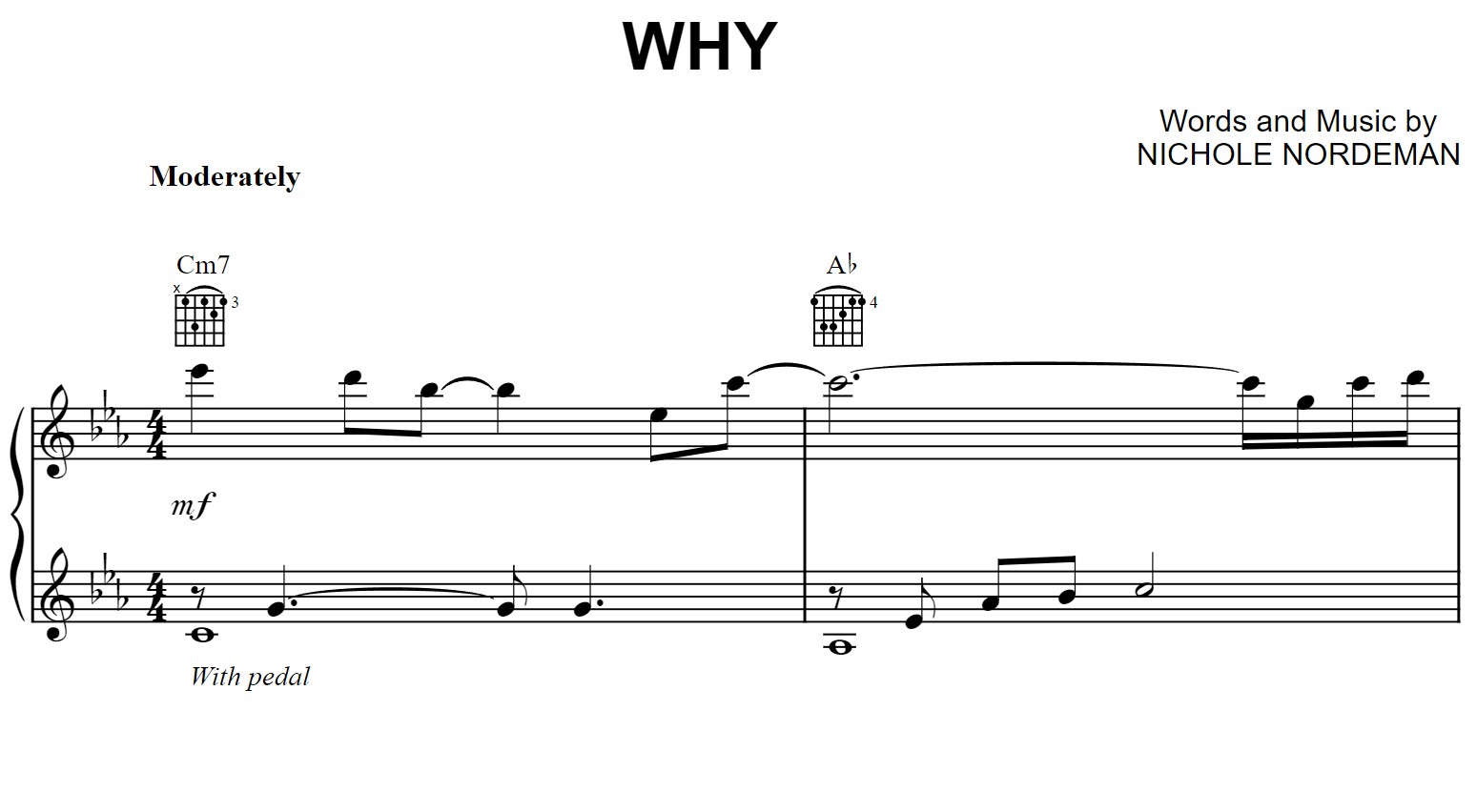Home>Production & Technology>Sheet Music>Norah Jones Don’t Know Why Sheet Music
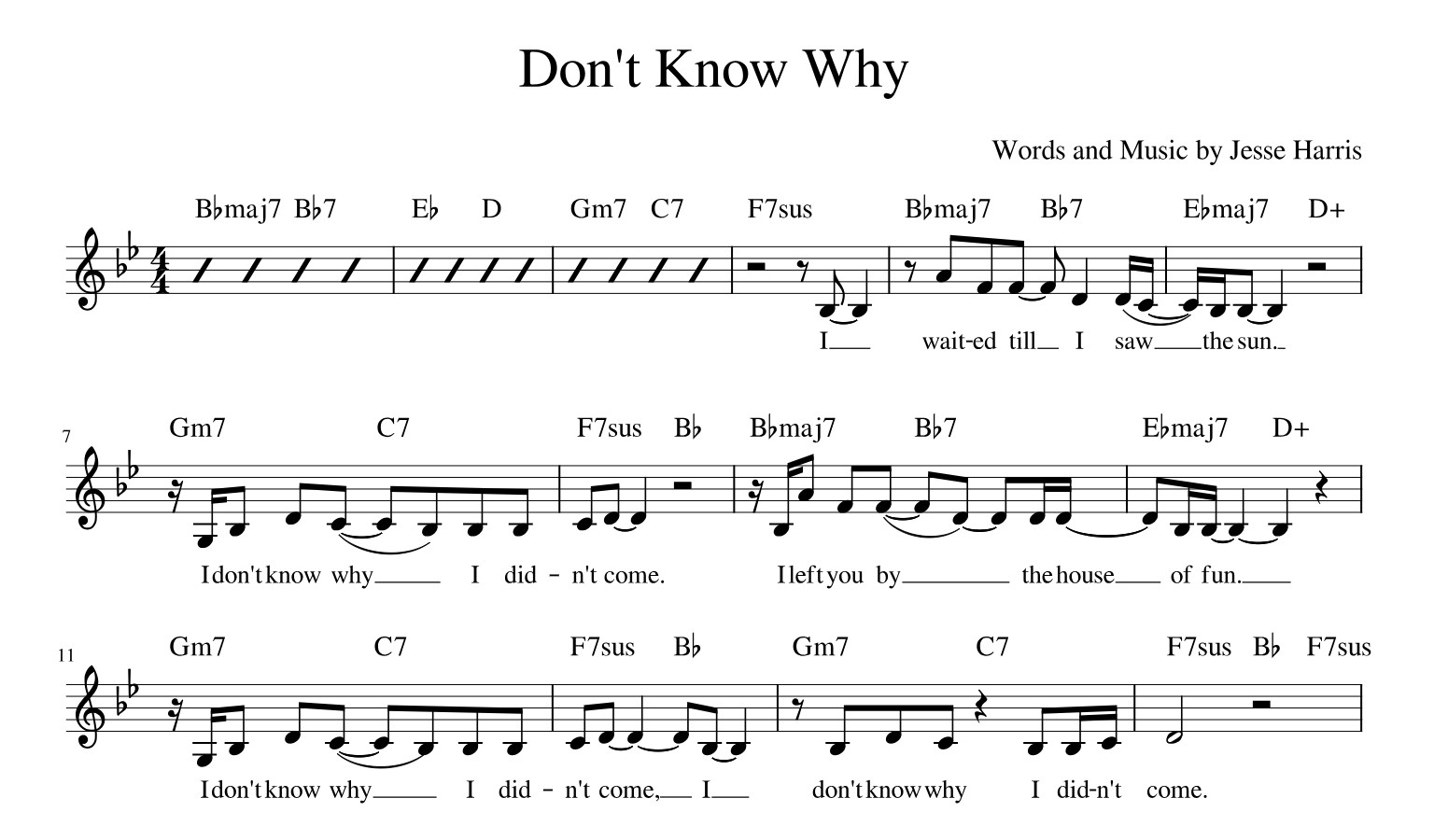

Sheet Music
Norah Jones Don’t Know Why Sheet Music
Modified: February 15, 2024
Get the sheet music for Norah Jones' sensational hit "Don't Know Why." Find and download the perfect arrangement for your instrument.
(Many of the links in this article redirect to a specific reviewed product. Your purchase of these products through affiliate links helps to generate commission for AudioLover.com, at no extra cost. Learn more)
Table of Contents
Introduction
Welcome to a comprehensive sheet music guide for the timeless jazz-pop hit “Don’t Know Why” by the talented Norah Jones. Since its release in 2002, this chart-topping song has captivated audiences with its soulful melody and enchanting lyrics. Whether you’re a beginner pianist or an accomplished musician looking for a fresh piece to add to your repertoire, this article will provide you with all the insights you need to master this beautiful composition.
“Don’t Know Why” was written by Jesse Harris and originally released on Norah Jones’ debut album, “Come Away with Me.” The song’s popularity skyrocketed, earning Norah Jones several Grammy Awards, including Record of the Year, Song of the Year, and Best Female Pop Vocal Performance. Its timeless charm continues to resonate with listeners of all ages and has become a staple in jazz and pop music.
In this article, we will delve into the intricacies of the sheet music for “Don’t Know Why,” breaking down its key signature, tempo, melody, chords, accompaniment, dynamics, and more. Whether you’re a pianist, guitarist, or vocalist, you’ll find valuable information and tips to help you understand and perform this iconic song with finesse and emotion.
So grab your instrument of choice, put on your favorite Norah Jones album, and let’s dive into the world of “Don’t Know Why” sheet music!
Overview of “Don’t Know Why” by Norah Jones
“Don’t Know Why” is a soothing and emotionally captivating jazz-pop song that showcases Norah Jones’ incredible vocal talent and her ability to blend various musical influences seamlessly. The song’s soft and introspective nature has resonated with audiences worldwide, making it one of Norah Jones’ most recognizable and beloved tracks.
The song begins with a melancholic piano intro, instantly setting the mood for the heartfelt lyrics that follow. Norah Jones’ smooth and velvety voice effortlessly carries the melody, drawing listeners in with its warm and intimate timbre. The simplicity of the composition allows for the raw emotions conveyed by the lyrics to take center stage.
The lyrics of “Don’t Know Why” delve into the complexities of love and the vulnerability that comes with not understanding why certain feelings persist. The introspective and relatable nature of the lyrics has struck a chord with listeners, making it a timeless anthem for those grappling with matters of the heart.
While the song holds true to its jazz roots, it incorporates elements of pop and folk, giving it a unique and refreshing sound. The tasteful use of instrumentation, such as the acoustic guitar and the brushed drums, adds richness and depth to the arrangement.
Released as a single in 2002, “Don’t Know Why” quickly rose to prominence, receiving widespread acclaim from both critics and audiences. Its success on the charts and numerous accolades solidified Norah Jones’ status as a talented and influential artist. The song’s timeless appeal has made it a staple in contemporary jazz and a must-know piece for aspiring musicians.
Whether you’re listening to Norah Jones’ original recording or exploring the countless cover versions, it’s hard not to be captivated by the beautiful melodies, heartfelt lyrics, and the emotional journey that “Don’t Know Why” takes you on.
Analysis of the Sheet Music
The sheet music for “Don’t Know Why” provides a detailed musical roadmap that guides musicians through the intricacies of the song. Analyzing the sheet music will give us a deeper understanding of the composition and help us interpret and perform it with accuracy and emotion.
At first glance, the sheet music for “Don’t Know Why” features a standard treble clef staff for the melody line, accompanied by chord symbols above the staff to indicate the harmony. The song primarily follows a 4/4 time signature, allowing for a steady and predictable rhythmic pattern.
As we explore the sheet music, we notice that the song is written in the key of Bb major. This key signature imparts a rich and warm tonality to the piece, adding to its soothing and contemplative nature. It sets the stage for the emotional journey that the song takes us on.
The melody of “Don’t Know Why” is soulful and melancholic, characterized by its gentle rises and falls. The use of vocal slides and bends adds a touch of expressiveness to the performance, allowing the artist to infuse their personal interpretation into the music. The sheet music captures these nuances, providing specific notations and markings to guide musicians in delivering an authentic rendition.
When it comes to the accompaniment, the sheet music outlines the basic chord progressions that underpin the song. It utilizes familiar chords such as Bb, F, Gm, and Ebmaj7, creating a harmonically pleasing foundation for the melody to soar. The rhythmic strumming pattern for guitar accompaniment is typically a gentle and laid-back strumming style, highlighting the song’s relaxed nature.
Dynamic markings such as “piano” (softly) and “mezzo piano” (moderately soft) are strategically placed throughout the sheet music to emphasize the song’s intimate and introspective qualities. These dynamic variations provide the performer with guidance on how to shape the phrases and create the desired emotional arc.
Additionally, articulation markings like slurs, staccatos, and accents are incorporated into the sheet music to guide the musicians in achieving the desired phrasing and expressiveness. These subtle nuances help bring the melody to life and allow musicians to add their personal touch to the performance.
Overall, the sheet music for “Don’t Know Why” provides a comprehensive guide to understanding and performing the song. By analyzing the key signature, tempo, melody, chords, accompaniment, dynamics, and articulation, musicians can delve deeper into the intricacies of the composition and bring out its emotional essence when performing.
Key Signature and Tempo
The key signature and tempo of a musical piece play crucial roles in shaping its overall character and mood. In the case of “Don’t Know Why,” it is written in the key of Bb major, which contributes to its rich and warm tonality.
Bb major is a key that is often associated with warmth, introspection, and contemplation. The sheet music indicates that the song follows the Bb major key signature, which means that the Bb note serves as the tonic, or home, note for the melody and chords. This key signature includes two flats—Bb and Eb—which give the piece a unique tonal color and contribute to its soothing atmosphere.
The tempo of “Don’t Know Why” is not explicitly indicated in the sheet music. However, a typical interpretation of the song places it in a moderately slow tempo, allowing the melody to unfold gently and creating space for the emotions to resonate. The relaxed tempo gives musicians the freedom to express the lyrical content and phrasing, showcasing the heartfelt nature of the song.
It’s important for performers to internalize and understand the key signature and tempo of “Don’t Know Why” in order to capture the essence of the composition. Being aware of the specific key provides a sense of grounding and helps musicians navigate the pitch relationships within the piece. Similarly, understanding the appropriate tempo allows performers to establish the rhythmic framework and maintain the desired overall feel of the song.
Whether you’re playing the melody on a piano or singing along with an accompaniment, being mindful of the key signature and tempo will help you deliver an authentic and emotionally captivating performance of “Don’t Know Why.” It’s these subtle nuances that contribute to the song’s timeless appeal and allow you to connect with the audience on a profound level.
Melody and Chords
The melody and chords are key elements that define the musical structure and emotional impact of “Don’t Know Why.” Understanding the interplay between the melody and chords is crucial for musicians looking to capture the essence of this beautiful composition.
The melody of “Don’t Know Why” is marked by its soulful and expressive nature. It gracefully rises and falls, embodying the melancholic and introspective themes of the song. The sheet music provides the melody line in the treble clef, allowing pianists and other instrumentalists to follow along easily.
As the melody unfolds, it is accompanied by a series of chords that create the harmony and provide a foundation for the song. The chord progression mainly revolves around the chords Bb, F, Gm, and Ebmaj7, giving the song a wistful and contemplative quality. The sheet music includes chord symbols placed above the melodic line, allowing guitarists or other accompanists to strum along and provide harmonic support.
The combination of the melody and chords in “Don’t Know Why” creates a beautiful synergy that drives the emotional impact of the song. The soulful melody floats gracefully above the supporting chords, creating a sense of depth and intimacy. Musicians can experiment with different interpretations and phrasing to bring their own artistic touch to the performance.
One notable aspect of the melody and chords in “Don’t Know Why” is the use of vocal slides and bends. These melodic embellishments add a touch of expressiveness and allow performers to infuse their personal interpretation into the music. As musicians navigate these slides and bends, they can add subtle nuances and emotional depth to their rendition.
Whether you’re a vocalist, pianist, or any other instrumentalist, paying attention to the interplay between the melody and chords is essential. The melody captures the heart and soul of the song, while the chords provide the harmonic context and support. By understanding and internalizing this relationship, musicians can deliver an authentic and captivating performance of “Don’t Know Why.”
Accompaniment and Instrumentation
The accompaniment and instrumentation in “Don’t Know Why” are carefully crafted to complement the melody and evoke a specific mood and atmosphere. The choice of instruments and the way they are arranged contribute to the overall sound and emotional impact of the song.
The primary accompaniment instrument in “Don’t Know Why” is the piano. The song begins with a beautiful piano intro that sets the tone for the rest of the composition. The piano accompaniment continues throughout the song, delicately supporting the melody and adding richness to the overall sound. The sheet music provides specific notations for the pianist to capture the subtleties and nuances of this accompaniment part.
In addition to the piano, “Don’t Know Why” often features acoustic guitar as part of the accompaniment. The guitar strums gently, adding a soothing and melodic quality to the music. This layer of guitar accompaniment provides a rhythmic and harmonic foundation, harmonizing with the piano and enhancing the overall texture of the song.
The instrumentation of “Don’t Know Why” goes beyond piano and guitar. It often includes a brushed drum kit, known for its soft and mellow sound. The brushed drums further contribute to the relaxed and intimate atmosphere of the song, providing a subtle rhythmic framework without overpowering the delicate vocal and instrumental elements.
These primary instruments work harmoniously together, creating a cohesive and evocative musical experience. The combination of the piano, acoustic guitar, and brushed drums gives “Don’t Know Why” its distinct jazz-pop sound and allows the emotional depth of the song to shine through.
Depending on the arrangement or performance, additional instruments such as upright bass or saxophone may be introduced to further enhance the overall sound and ambiance. However, the core trio of piano, guitar, and drums maintains the warm and intimate nature of the song.
Whether you’re performing “Don’t Know Why” as a solo pianist, in a small ensemble, or with a full band, the delicate interplay between the accompaniment instruments and the melody is essential. The thoughtful instrumentation and arrangement choices in this song play a vital role in capturing its emotional essence and ensuring a captivating performance.
Dynamics and Articulation
Dynamics and articulation are crucial elements in bringing the sheet music for “Don’t Know Why” to life. These musical techniques add depth, expression, and emotion to the performance, allowing musicians to captivate the audience and convey the song’s intended mood and message.
Dynamics refer to the variations in volume or intensity throughout a musical piece. In “Don’t Know Why,” dynamics play a significant role in creating the intimate and introspective atmosphere that the song is known for. The sheet music includes dynamic markings such as “piano” (softly) and “mezzo piano” (moderately soft), guiding the performer to execute certain sections with gentleness and restraint. These subdued dynamic markings reflect the vulnerability and introspection expressed in the lyrics, enhancing the overall emotional impact of the song.
On the other hand, there are moments in “Don’t Know Why” where the dynamics may rise slightly, introducing a sense of crescendo or increased intensity. These dynamic variations may be marked as “mezzo forte” (moderately loud) or “forte” (loud), adding moments of emotional release, emphasizing certain phrases, or heightening the climactic sections of the song. When executed effectively, these dynamic contrasts can create a more captivating and engaging performance.
Articulation, on the other hand, focuses on how individual notes or phrases are played and connected. In “Don’t Know Why,” articulation marks such as slurs, staccatos, and accents are incorporated into the sheet music to guide musicians in achieving the desired phrasing and expressiveness. Slurs are used to indicate smooth and connected notes, enhancing the legato flow of the melody. Staccatos, on the other hand, indicate short and detached notes, adding a sense of lightness and crispness to certain passages. Accents bring emphasis to specific beats or notes, providing a sense of clarity and impact.
By paying attention to dynamics and articulation, musicians can add a unique and personal touch to their rendition of “Don’t Know Why.” Adjusting the volume, subtly shaping phrases, and executing the appropriate articulation techniques can help capture the heartfelt vulnerability and introspection of the song, bridging the gap between the sheet music and a truly captivating performance.
As you practice the sheet music for “Don’t Know Why,” experiment with different dynamic levels, explore various articulation techniques, and pay attention to the finer nuances of expression. This attention to detail will not only enhance your performance but also allow you to connect with the core emotions of the song and leave a lasting impression on your audience.
Interpretation and Performance Tips
Interpreting and performing “Don’t Know Why” requires a thoughtful understanding and personal connection with the song. Here are some tips to help you deliver an authentic and captivating performance.
1. Embrace the Emotions: “Don’t Know Why” is a deeply introspective and emotional song. Take the time to connect with the lyrics and the underlying themes of the composition. Allow yourself to feel the vulnerability and uncertainty expressed in the music, and let those emotions guide your interpretation.
2. Expressive Dynamics: Use the dynamics indicated in the sheet music to enhance the emotional impact of the song. Explore the subtle shifts in volume, bringing out the softer moments with gentleness and restraint, while embracing the slightly louder sections with controlled intensity. This dynamic range will give the music depth and captivate the listener.
3. Artistic Nuances: Experiment with articulation techniques to add expressive nuances to your performance. Utilize legato and smooth phrasing for a seamless and flowing melody, punctuate certain phrases with staccatos for added emphasis, and highlight specific notes with accents for clarity and impact.
4. Personal Interpretation: Put your own artistic touch on the song. While staying true to the essence of “Don’t Know Why,” feel free to explore different phrasing, subtle vocal ornamentations, or instrumental variations that allow your unique musical style to shine through. Allow your interpretation to come from an authentic place, ensuring that the performance resonates with your personal connection to the song.
5. Connection with Accompaniment: If performing with a pianist or a band, establish a strong connection and communication with your accompanists. Working together, find a cohesive balance between the vocals and the accompanying instruments, allowing each element to complement and empower the other. Listen and respond to the nuances and dynamics in the accompaniment, creating a harmonious musical conversation.
6. Timing and Phrasing: Pay attention to the timing and phrasing of the song. Allow the natural ebb and flow of the melody to guide your interpretation. Give each phrase and lyric the space and attention it deserves, allowing the music to breathe and the emotions to unfold. This attention to timing and phrasing will create a captivating and engaging performance.
7. Connect with the Audience: As you perform “Don’t Know Why,” remember to engage with the audience. Establish eye contact, convey the emotion of the song through your facial expressions and body language, and create an intimate connection that allows the listeners to feel the story and message of the music.
By embracing the emotions, dynamics, articulation, and personal interpretation of “Don’t Know Why,” you can deliver a truly memorable and captivating performance. Remember to remain authentic, connect with the heart of the song, and allow your own musicality to shine through. Let the beauty of “Don’t Know Why” resonate with your audience and create a captivating and profound musical experience.
Conclusion
“Don’t Know Why” by Norah Jones is a timeless jazz-pop masterpiece that continues to captivate audiences with its heartfelt lyrics and soulful melodies. Throughout this comprehensive guide, we’ve explored the various aspects of the sheet music, providing insights to help musicians understand and perform this beautiful composition with nuance and emotion.
From analyzing the key signature and tempo to delving into the melody, chords, accompaniment, dynamics, and articulation, we have uncovered the intricacies that make “Don’t Know Why” a standout piece. The key of Bb major sets the warm tonality, while the delicate interplay between the melody and chords creates a mesmerizing musical experience.
Understanding the sheet music allows musicians to bring their own interpretation and artistic flair to the song. By embracing the emotions, utilizing expressive dynamics, and exploring the subtleties of articulation, performers can create truly captivating performances that resonate with listeners.
Remember to connect with the profound lyrics and immerse yourself in the vulnerability and introspection of “Don’t Know Why.” Let the music guide your interpretation, allowing your personal touch to shine through while maintaining the essence of the song.
As you navigate the sheet music and dive into the world of “Don’t Know Why,” embrace the emotional journey that the composition offers. Connect with the accompaniment, pay attention to timing and phrasing, and establish a strong connection with your audience to create a memorable and engaging performance.
Whether you’re a pianist, guitarist, vocalist, or any other musician, the sheet music for “Don’t Know Why” provides a roadmap to express the depth and beauty of this extraordinary song. So, take your instrument, immerse yourself in the music, and let the timeless melodies of “Don’t Know Why” resonate in every note you play or sing.
As you embark on mastering this iconic piece, may the insights and tips provided in this guide serve as a valuable resource to enhance your understanding and performance of “Don’t Know Why.”

